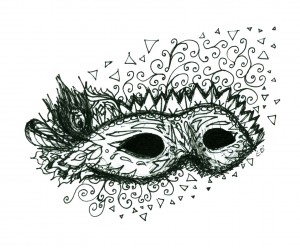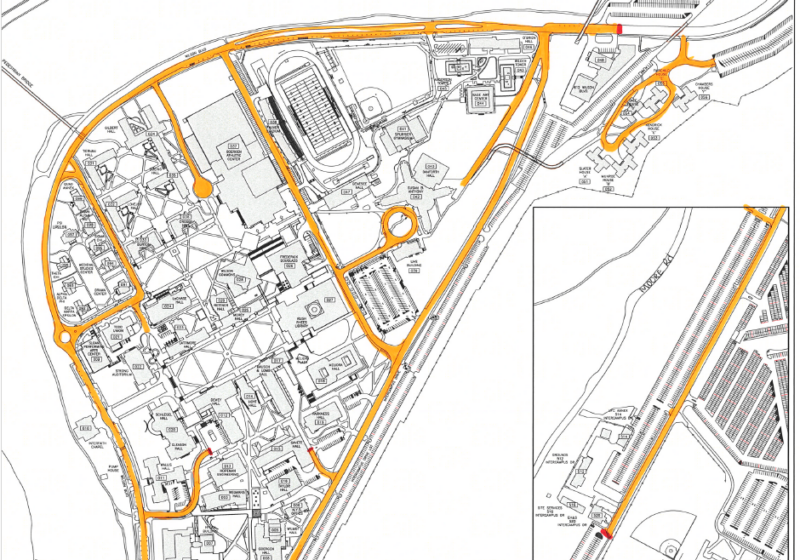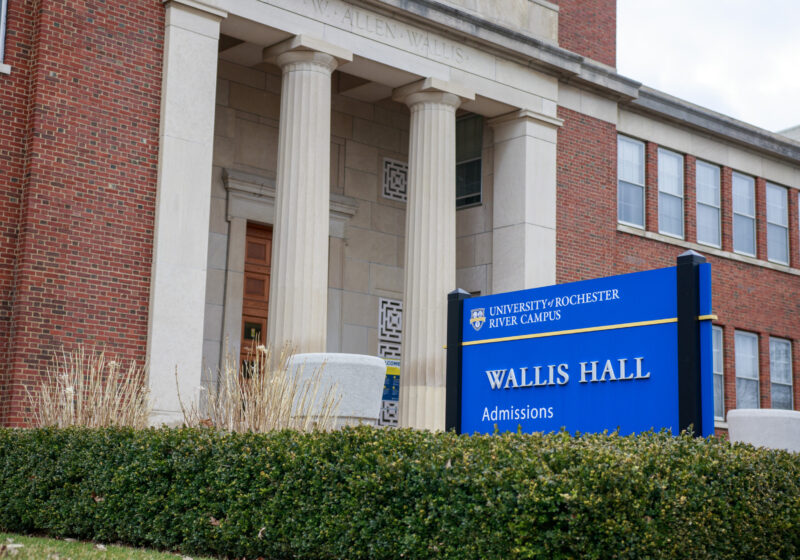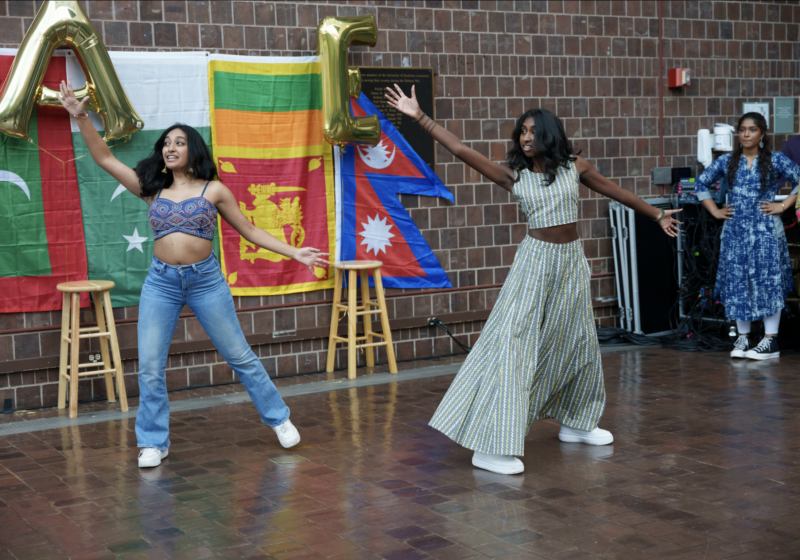After working as a sound editor for projects like Spike Lee’s “School Daze” and Brian De Palma’s “Carlito’s Way”, UR alumnus Peter Odabashian switched to documentary filmmaking in the mid ’90s. In 2013, Odabashian – along with his three co-directors Louis Alvarez, Andrew Kolker, and Paul Stekler – debuted “Getting Back to Abnormal” at SXSW. At once jarring, moving, and brashly funny, the film examines racial dynamics in modern-day New Orleans while also paying loving tribute to a city rich with cultural idiosyncrasies. The movie was released as a part of the award-winning PBS series “Point of View”, whose socially-minded programs include the works of Michael Moore, Jonathan Demme, and Joshua Oppenheimer (“The Act of Killing”), among other acclaimed directors. I had the privilege of talking with Mr. Odabashian over the summer, and acquired the point of view of a man whose productive career began in the same hallways and quadrangles – renovations notwithstanding – that we roam everyday.
JJ: The electronic press release of “Getting Back to Abnormal” labeled the film a “post-post Katrina doc”. I found it interesting that no city is defined by just one event that happened to it. I liked how the movie looked at the daily life of the city, not focusing solely on Katrina. That said, there have been many important films and documentaries made on Katrina and even more on race in America. Were there any films or filmmakers that influenced the making of “Getting Back to Abnormal”?
PO: Well… no I don’t think any particular filmmaker. I think actually my partners and I for years have always tried to make documentaries that had a sense of humor [Laughs]. We thought that that was important so it didn’t feel like watching a documentary was like taking your medicine. So I think that’s one factor. So we work hard at both trying to look for characters who have a sense of humor and convey that, and also when something is potentially funny in the material, we try to bring it out, which involves a certain kind of editing and setup and a certain kind of rhythm like a standup act. You have to employ the same kind of rhythms to try to make something funny in a film. That’s something stylistically that we try to do a little different. I think the other big factor is – I don’t think it’s entirely correct to just think of people who live in New Orleans as “victims”, especially African Americans in New Orleans, to think of them as victims of the storm, victims of George Bush. They’re actually quite proud of their lifestyle and they’re certainly proud of their city. I was the only born and raised New Yorker of the four of us who went down there to shoot. In almost every interview we did, I was endeavoring to get somebody to say something negative about New Orleans, but it was almost impossible [Laughs]. People who live there love that city. Lots of people who live there never leave, they don’t go traveling, they don’t go on vacation. They just stay in New Orleans. That was the main motivation [for making the movie]. None of the film was made from the point of view of outsiders who didn’t know New Orleans very well. My three partners all lived there for at least ten years, so after Katrina we were sort of biding our time to see when might be a good chance to try and do something that conveys the idea of what it’s like to live in New Orleans and what New Orleans is actually like.
JJ: Being that you didn’t grow up in New Orleans, what drew you to the city in the first place, and how did you get involved in the project?
PO: Well, the four of us first worked together starting around 1995. My career really started as an editor. I was sound editor of feature films, dramatic films, and then I started editing documentaries in the ’80s – I’ve done that ever since. We worked on a film in 1995 called “Vote for Me”. It’s a four-hour film about local politics in America. So we’ve known each other since then. Two of my partners – Andy Kolker and Louie Alvarez, and myself – they’ve been partners for 35 years, and the three of us have been partners for over ten years. And I’ve been editing their films since before we were partners, since ’95. So we all have a lot of history together. So that’s basically why – we just work together. Two of them are my constant partners. Until very recently – we’ve actually broken it up now – but until very recently we’ve been partners.
JJ: The film paints New Orleans as a city divided, but during the segment where the Saints go to the Superbowl, the film spotlights a rare moment where the people of the city are united across racial, economic, and cultural boundaries. Was there a reason you included this segment in the movie where you did, right before election day occurred?
PO: We didn’t mean to convey that it was a city divided. The interesting thing about New Orleans, as compared to some other cities, is that race is just like Henry Irvin [says at] the very beginning of the film: it’s got the blackest white people and the whitest black people in America. So generally speaking, especially for an outsider, it’s hard to tell whether the people are black or white – for a great many people, there’s a lot of mixed history there. So that’s one aspect. Two, certainly all the music bars and music places and the food – all that is very mixed. You know, everybody enjoys all those aspects of New Orleans. The festivals, the Mardi Gras – all that stuff is very mixed, very integrated. So socially, culturally, [musically] – all that stuff, very integrated in the city. Football, you know. All that stuff….more than most cities, I would say, if not the most in America even, in some sense. But at the same time, there are real divisions too. Socioeconomic, educational – the public school system is almost, I think, 90% black. Most of the whites go to Catholic schools or private schools. So, you know, it’s like [in] lots of places there are these divisions and also a lot of culture that black and white folks have in common in New Orleans […] Political fights in New Orleans often boil down to black candidates vs. white candidates. That’s just the nature of the city – it’s a black majority city that for thirty years has been basically controlled by a black-majority city council and a series of black mayors. So, certainly when people vote, there’s a racial divide. White people get to vote for the white candidates – I mean it’s not entirely obvious, but there is some amount of that. Because even in our films, Stacy Head and Corey Watson – they really didn’t have many policy differences, their policy differences were very minor. They’re both progressives, they’re both basically Democrats. You don’t announce your party norms, but it’s a very Democrat, progressive city. Race was one of the few differences between them, among other things, but not policy.
JJ: At the end of the film, one interviewee remarked how she wouldn’t want to live in a “post-racial” New Orleans because she feels that the many cultures that are present in a city are cultivated from within boundaries marked by race. Applying her statement to the U.S. as a whole, do you agree with her statement? Do you think it’s important that we be post-racial, or do you think such an approach would reduce the complexity of American culture?
PO: [Laughs] That’s a good question.
JJ: And just a follow-up question after you answer the first one: do you think we could ever even be post-racial? Is it possible?
PO: Yeah, I think I’m going to answer the second one first. You know….you don’t want to turn into one culture. I don’t think that’s anybody’s goal. I think, culturally, the diversity of America has always been one of its strong points, so I think most people would want to try to maintain that. That’s of course the risk in gentrification, and television has the effect of making culture the same everywhere. And mass media in general, not just television, and the Internet as well. I hope that doesn’t happen, and I think there are forces in New Orleans that can prevent that from happening. You know, certainly it would be nice to have a post-racial America in terms of opportunity and equality and all that. Is that possible? It would be nice to have the former without the latter, it would be nice to have equal opportunity and not a complete blending of all the cultures because I think that keeps the country vital, keeps the culture vital.
JJ: This next question is just purely out of curiosity, as I am a UR student. What did you study while you were at Rochester, and how has it shaped your career as a filmmaker?
PO: [Laughs] I was a Philosophy major, but I made some little films my senior year at U of R. I remember [watching] flicks at Eastman House – are they still called “flicks”? [Laughs] And I did some independent studies with different professors. I don’t know if you can still do that now, but when we were in school – I graduated in ’71 – when I was there, it was probably the most liberal UR was ever, it was right around that period. I did a bunch of independent studies where I made movies. And then I did some work at NYU, and then I just started working like that. The Philosophy major – I’ve always enjoyed that. I did my junior year abroad in England. There’s a chance I would have gone in that direction, but… I didn’t [Laughs]. I enjoyed my courses, I enjoyed my experience. I still have a lot of friends that I made in college, and they’re still friends with me, so that’s nice.
JJ: Do you have any projects currently in development?
PO: Yeah I’m working on a film – actually, it’s a personal film. I’m making it solo, I’m making it by myself – that means I completely botched up – [Laughs], which is something that wasn’t so easy to do in the past but now it’s actually sort of possible. And for someone in film – I’ve worked collaboratively my entire life, you know. That’s good and bad. You work with a lot of people – they help you, you help them, the team sort of feeling about things is really nice – but what I’m doing now, it’s really nice not to have to have meetings, not to have to compromise whatever vision you might have, things like that. It’s a real change, it’s a different change – it’s called “Old Friends”, and actually it’s about people I know, and they’re old friends in the sense that they’ve been my friends for quite awhile, and they’re also old. So it’s about friendship, it’s about aging, it’s about things like that. It’s very personal, and quite moving, I hope – that’s my intention. People who have seen it so far seem to think so. Hopefully it will be out in the fall. In terms of festivals and stuff, it might come out in the fall, but let’s say 2015, that’s probably more realistic.
Jeng is a member of the class of 2016.






